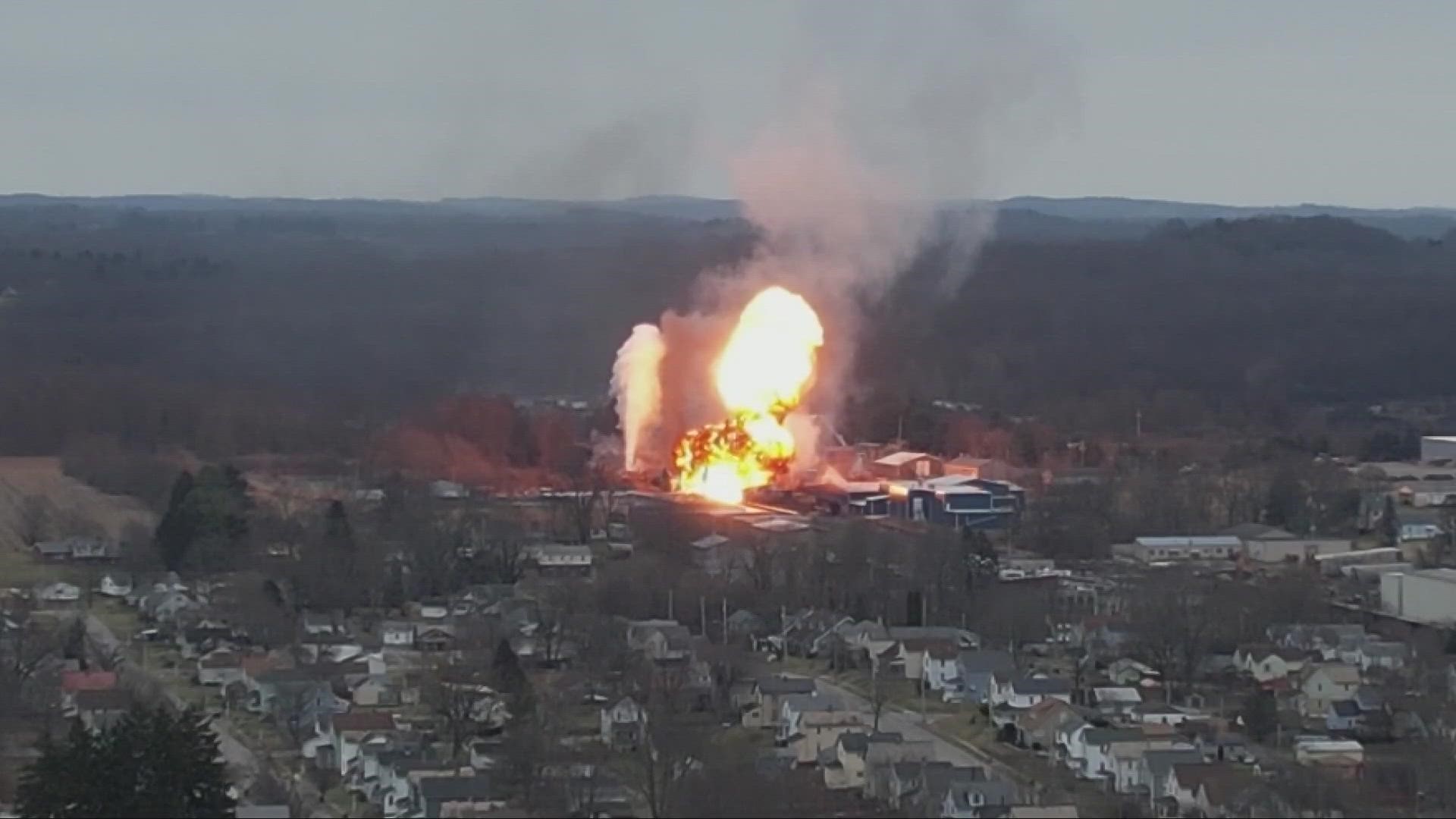EAST PALESTINE, Ohio — Brittany Dailey stood outside her hotel watching black smoke darken the sky 10 miles to the west as crews burned toxic chemicals from tanker cars that derailed just down the street from her home.
The faint smell of chlorine hung in the air Monday night while she wondered even if she'd want to return home — not knowing whether it’d be safe for her 8-year-old son and their Saint Bernard.
“I'm scared to go back home,” she said the next day. “I’m eventually going to have to go back, but it makes me want to sell my house and move at this point.”
Air monitoring so far had not detected dangerous levels of fumes in the Ohio and Pennsylvania communities near the derailment site, but residents living close to the wreckage still weren’t being allowed back, authorities said Tuesday.
While the fire from the controlled release of the chemicals was no longer burning, authorities said they want to ensure the air is safe before lifting the evacuation order issued by the governors in Ohio and Pennsylvania who warned that the fumes could cause death or serious injury to those nearby.
“I want nothing more than to get my residents back home,” said East Palestine Fire Chief Keith Drabik. “Safety is paramount.”
James Justice of the U.S. Environmental Protection Agency said a network of air station monitors inside and outside the evacuation zone was collecting samples and that none of their readings found anything to be concerned about. “We want to make sure that’s not going to change,” he said.
Authorities were still developing a plan that would allow them to know when residents could go home, he said.
National Guard members wearing protective gear would be deployed to take readings inside homes, basements and businesses, said Major General John Harris Jr.
But all of that did little to reassure residents who were forced to leave after about 50 cars, including 10 carrying hazardous materials, derailed in a fiery crash Friday night on the edge of East Palestine.
“I don’t think everything’s fine. They’ve been saying everything’s fine the whole time," said Dailey, who also runs a daycare inside the evacuated area of the village.
Once she's allowed back, she plans on buying air purifiers and deep cleaning the rugs and curtains inside her home and business. “In my heart, I cannot allow kids to come back in that center before I can clean,” she said.
So far, no injuries have been reported from the derailment or the controlled release but some people have complained about smelling chlorine and smoke in the air and having headaches.
Most, if not all, residents in the danger zone left well before officials decided on Monday that the safest way to prevent a more dangerous explosion would be to release and burn the the vinyl chloride inside five of the derailed tanker cars.
But officials warned the controlled burn would send phosgene and hydrogen chloride into the air. Phosgene is a highly toxic gas that can cause vomiting and breathing trouble and was used as a weapon in World War I.
Seanna Shipley, who lives in the evacuation zone and fled to a hotel Sunday night with her boyfriend, their two dogs and a few clothes, said she hopes her home is tested before she returns.
“Honestly, I don’t even know what to do about the air inside,” she said. “I'm definitely nervous about going back, but I have to. Once they say it's safe to go home, they’ll stop reimbursing people, so I'll have to go home.”
Those just outside the evacuation zone in East Palestine and in neighboring Beaver County, Pennsylvania, were urged to stay indoors as a precaution. Officials in neighboring counties said air samples did not show any worrisome levels of contaminates.
The site of the derailment is very close to the state line, and the evacuation area extended into a sparsely populated area of Pennsylvania. About half of the 4,800 residents of East Palestine had been warned to leave over the weekend before officials decided Monday to use the controlled release.
Forced evacuations began Sunday night after authorities became alarmed the rail cars could explode after a “drastic temperature change” was observed in one car.
Federal investigators say a mechanical issue with a rail car axle caused the derailment.

